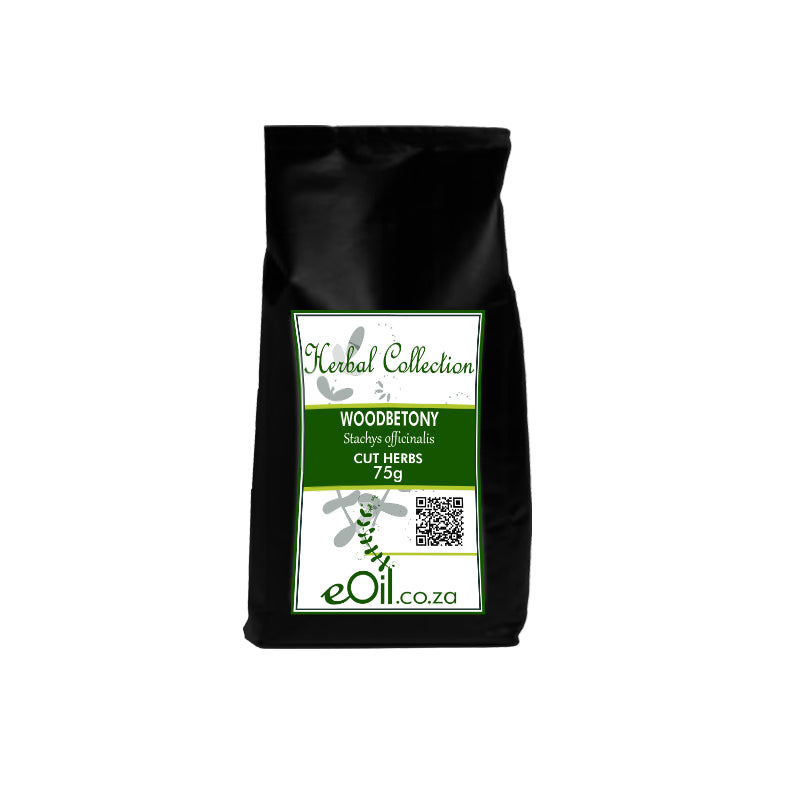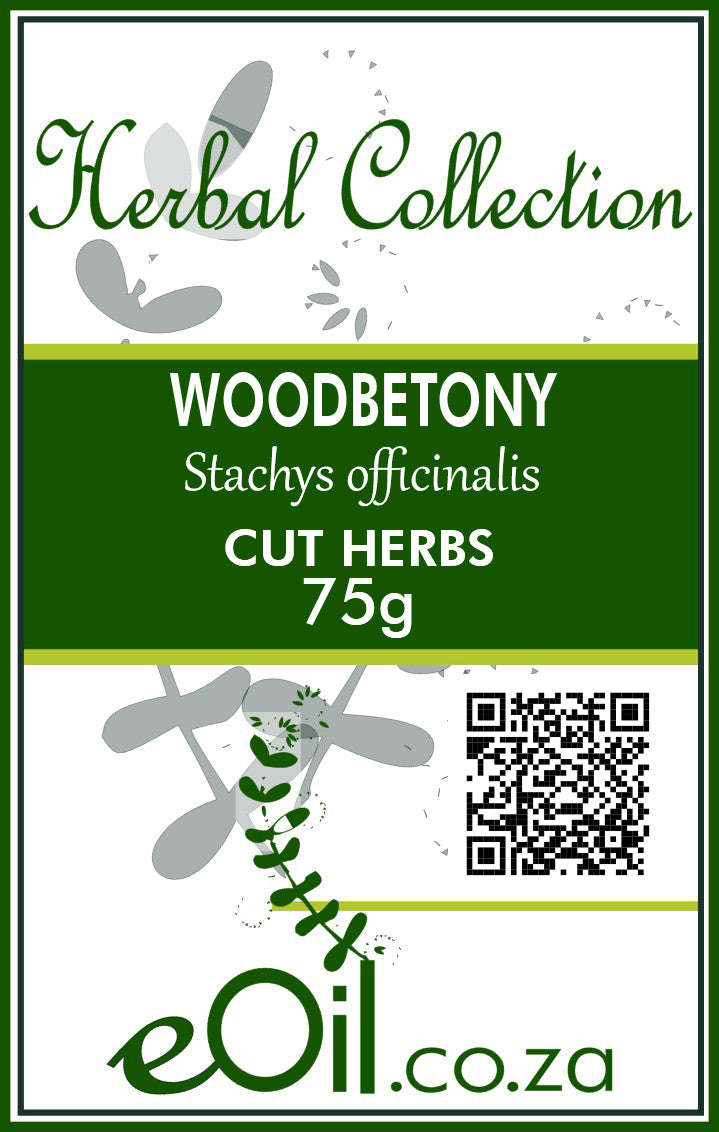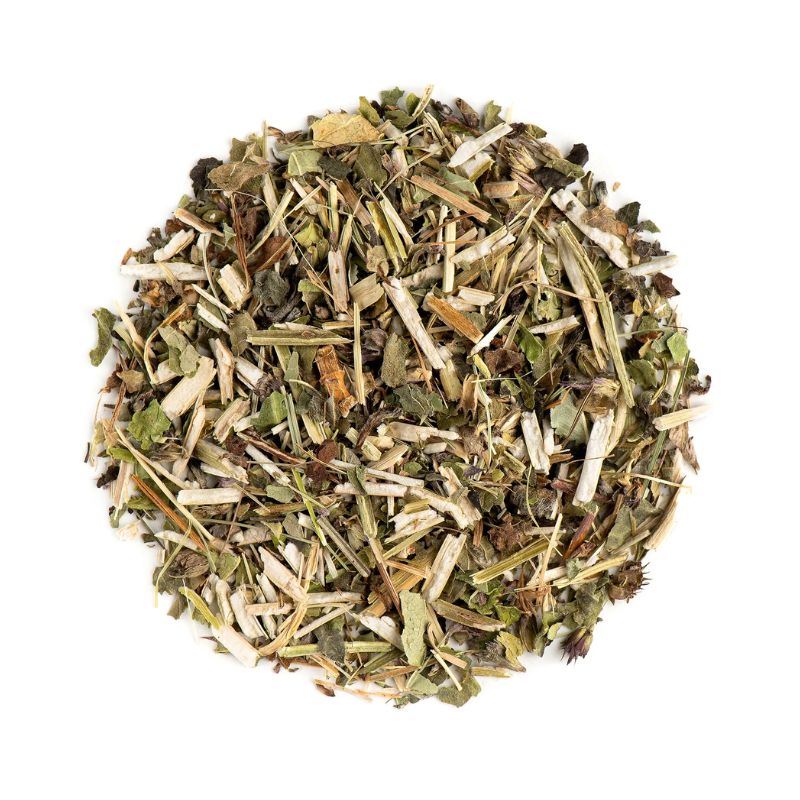Wood betony Dried Cut Herbs - Herbal Collection
Wood betony Dried Cut Herbs - Herbal Collection - 75 GR is backordered and will ship as soon as it is back in stock.
Description
Description
Dried WoodBetony (Stachys officinalis) is a time-honored herb valued across cultures for its distinctive earthy scent and traditional uses.
Commonly brewed as a tea or infusion, it is reputed to provide supportive effects.
For detailed information, please refer to the tabs below.
TRADITIONALLY USED FOR
Wood Betony Dried Herb: A Guide
Wood Betony, scientifically known as Stachys officinalis, is a versatile herb with a rich history in traditional medicine. Known for its potential health benefits, dried wood betony is a valuable addition to any herbal remedy collection. Here is a detailed overview of its properties, uses, and safety considerations for your wellness website.
Botanical and Description
- Botanical Name: Stachys officinalis
- Family: Lamiaceae
- Common Names: Hedge Nettle, Bishop's Wort
- Plant Description: Wood betony is a perennial herb native to Europe, commonly found in dry grasslands and meadows. It features square stems, toothed leaves, and spikes of purple flowers.
Nutritional and Chemical Composition
Wood betony contains a variety of compounds that contribute to its health benefits:
- Phenolic Glycosides: Known for their antioxidant properties.
- Flavonoids: Plant-based chemicals that may help improve circulation and provide antioxidant effects.
- Alkaloids: Contribute to its calming and digestive properties.
Tannins: Known for their astringent and anti-inflammatory effects.
Properties
Wood betony is known for several therapeutic properties, including:
- Cognitive Clarity: Supports mental clarity, focus, and cognitive function.
- Digestive Comfort: Alleviates occasional digestive discomfort and supports digestive harmony.
- Relaxation and Stress Relief: Promotes relaxation and stress relief, soothing tension and anxiety.
- Immune Support: Offers immune system support with its natural compounds.
- Respiratory Well-Being: Supports respiratory health and soothes occasional respiratory discomfort.
Uses and Applications
- Internal Use:
- Tea: Wood betony tea can be made by steeping 1-2 teaspoons of dried leaves and flowers in hot water for 5-10 minutes. It is used to improve digestion, reduce stress, and support respiratory health.
- Tincture: Made by infusing wood betony in high-proof alcohol for several weeks, used for its calming and digestive properties.
- External Use:
- Poultice: Applied to wounds for its wound-healing properties, similar to yarrow.
- Bath Soak: Used in herbal baths for relaxation and skin health.
Conclusion
Dried wood betony is a versatile and potent herb with a range of applications for cognitive clarity, digestive comfort, and stress relief. Its antioxidant and anti-inflammatory properties make it a valuable addition to herbal remedies. However, due to potential allergies and contraindications, it should be used with caution. Always consult with a healthcare provider before incorporating wood betony into your herbal regimen, especially if you have underlying health conditions or are pregnant or breastfeeding.
INFORMATION
Source : http://www.wikiphyto.org/wiki/Woodbetony
Reference on http://www.wikiphyto.org
Translation in English by Google Translate (go to the page of the source linked | on Chrome cellphones go on the 3 dots on the top right and select translate in your preferred language | on laptop right click your mouse and select option translate when hoovering on the page
plant name
Betony, epiaria officinalis , Swiss tea , beautiful head
International Latin denomination
Stachys officinalis (L.) Trevis. (= Stachys betonica Benth.) = Betonica officinalis L.
botanical family
Lamiaceae
Description and habitat
- Perennial grass with a thick stump, common in France
- Woods, moors or pastures on siliceous soils
- Single rod with square section, up to 50 cm
- Leaves opposite ovate with a heart-shaped base, crenate margin
- Ovoid spike inflorescence by coexistence of storied floral whorls
- Flowers with bilabiate corolla, red, pink or even white
History and tradition
- Formerly very famous
- It was one of the great medieval panaceas for its vulnerary properties
- Vulnerable species or Swiss tea from the 1949 Codex:
- Leaves and tops of wormwood , betony , calamentum , germander , hyssop , ground ivy , oregano , periwinkle , rosemary , sage , scolopendra , scordium , thyme , veronica ; arnica flowers , cat's foot , coltsfoot ; in equal parts
- Its sneeze leaves were sometimes used in tobacco, causing a sneeze and "clearing the brain"
Parts used
- Leaf, root, whole plant
Dosage forms available
- Mother tincture of Betonica officinalis whole plant
Usual dosages
Composition
Main components of the plant
- Tannins
- Lactones of amino alcohols : stachydrin ( amino alcohol from the betaine family )
- Complexe glucosidique
- Lithospermic acid (?)
- Glycosides de phényléthanoïdes : bétonyosides A-F, acétoside, campnéosides II, forsythoside B, leucosceptoside B [1]
- Diterpenes : AD concreteicosides, concreteicolide in the roots [2]
Main components of buds or young shoots
Main components of essential oil
Properties
Plant properties
- Béchique, émolliente, expectorante
- Carminative, cholagogue
- Sternuatoire, émétique
- Hypotensive (complexe glucosidique) [4]
- Vulnerable
- Antioxidant [5]
- A related species, Stachys lavandulifolia Vahl. is anxiolytic [6]
- Lithospermic acid is contraceptive and antihormonal
Bud properties
Properties of essential oil
Indications
Indications of the whole plant (phytotherapy)
- Catarrhal bronchitis
- Cough
- Sinusitis [7] , dental problems [8]
- Gallstones, heartburn, hypertension, migraines and neuralgia (?)
- As an ointment for wounds
Indications of the bud (gemmotherapy)
Specific indications of essential oil (aromatherapy)
Known or suspected mode of action
- Antihormonal properties (?) which would be due to lithospermic acid ( polyphenol having antigonadotropic, antithyrotropic, antiprolactin properties)
Usual formulations
Regulations
- French Pharmacopoeia list A (sheet)
Possible side effects and precautions for use
Bibliographic references
- Go↑ Toshio Miyase, Ryouko Yamamoto, Akira Ueno. Phenylethanoid glycosides from Stachys officinalis. Phytochemistry, Volume 43, Issue 2, September 1996, Pages 475-479
- Go↑ Miyase T. Yamamoto R. Ueno A. Betonicosides A-D and betonicolide, diterpenoids from the roots of Stachys officinalis. Chemical and pharmaceutical bulletin. 1996, vol. 44, no8, pp. 1610-1613 [1]
- Go↑ Vjera Bilusic Vundac, Hartwig W. Pfeifhofer, Adelheid H. Brantner, Zeljan Males, Misko Plazibat. Essential oils of seven Stachys taxa from Croatia. Biochemical Systematics and Ecology, Volume 34, Issue 12, December 2006, Pages 875-881 [2]
- Go↑ UB Ismailoglu, I Saracoglu, US Harput, I Sahin-Erdemli. Effects of phenylpropanoid and iridoid glycosides on free radical-induced impairment of endothelium-dependent relaxation in rat aortic rings. Journal of Ethnopharmacology, Volume 79, Issue 2, February 2002, Pages 193-197 PMID 11801381
- Go↑ Adam Matkowski, Magdalena Piotrowska. Antioxidant and free radical scavenging activities of some medicinal plants from the Lamiaceae. Fitoterapia, Volume 77, Issue 5, July 2006, Pages 346-353
- Go↑ M. Rabbani, S. E. Sajjadi, H. R. Zarei. Anxiolytic effects of Stachys lavandulifolia Vahl on the elevated plus-maze model of anxiety in mice. Journal of Ethnopharmacology, Volume 89, Issues 2-3, December 2003, Pages 271-276
- Go↑ Eric Yarnell, Kathy Abascal, Carol G. Hooper. Chronic Sinusitis. Alternative and Complementary Therapies. February 2003, 9(1): 39-41 [3]
- Go↑ Kathy Abascal, Eric Yarnell. Herbs for Treating Periodontal Disease. Alternative and Complementary Therapies. August 2001, 7(4): 216-220. doi:10.1089/107628001750424544
CAUTION
Store in a cool, dry place, away from light. Keep tightly closed, away from the reach of Children and pets.
Do not exceed the daily dose.
This product is not intended to prevent or cure any form of illness or disease.
If you are pregnant or nursing ; If you have a medical condition or are in the course of medical treatment ; If you are programmed for theater/operation in the near future, please consult your healthcare practitioner before using this product.
This product cannot replace a varied and balanced diet and a healthy lifestyle.
This product has not been evaluated by the SAHPRA for its quality, safety or intended use.
- Pregnancy and Breastfeeding: Safety during pregnancy and breastfeeding is not well-documented; consult a healthcare provider before use.
- Allergies: Individuals allergic to plants in the Lamiaceae family should exercise caution.
- Potential Side Effects: Generally considered safe with few reports of toxicity, but may cause mild gastrointestinal upset in some individuals.
For More Information please check our General Safety Herbal products Page

Wood betony Dried Cut Herbs - Herbal Collection - 75 GR is backordered and will ship as soon as it is back in stock.






